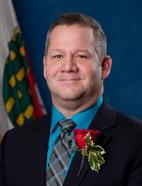Yesterday the Member from Inuvik Twin Lakes raised concerns in a Member’s statement about the Affirmative Action Program and the inability of local people to get jobs with the G.N.W.T. — jobs which, with minimal training, they would be able to do regardless of the perceived educational requirements that they as individuals may not meet.
Currently, the G.N.W.T. spends a lot of money flying highly educated southerners into communities. Most of these individuals have little to no experience in small communities. Often they only stay for a year or two before returning south. It’s a revolving door. This is expensive.
Is this the best use of our limited funds? Would it not be more effective and better use of our funds to invest in the people of the North? Would it not be better to train people from the community to do the work required in those communities?
Prior to the major cost cuts and job cuts of 1996, the G.N.W.T. delivered a program called the Public Service Career Training Program. It was a competency-based, on-the-job training program focused on training indigenous aboriginal people to help them obtain managerial and officer-level jobs. It gave these individuals an opportunity to train for positions which they had skills to do but lacked either the education or the experience to get through the normal competition process.
This program had an 84 per cent success rate and graduated between 25 and 30 indigenous aboriginal people into meaningful officer and managerial level positions per year. Upon completion of their training, they had the required knowledge, skills and abilities to completely and confidently perform the duties of the jobs they were trained to take on.
It was a very successful program, and as the G.N.W.T., we should have been proud of it. Instead, as part of the reduction exercises in 1996, the G.N.W.T. cut the budget in half, eliminated all the support positions related to the program, and devolved the responsibility for the delivery to the regions without providing the positions required to support the program. As a result, it became completely ineffective and died. Today it does not exist in any capacity.
Now we have no comprehensive training programs to assist indigenous aboriginal people in obtaining meaningful employment through comprehensive training on the job. This is a shame.
Over the last couple of weeks we have heard about budget cuts and reinvestments. We have heard about maximizing Northern employment. At the appropriate time I'll be asking the Minister Responsible for Human Resources questions concerning these reinvestments in training for people of the North.
Mr.
Speaker, I seek unanimous consent to
conclude my statement.
Unanimous consent granted.
